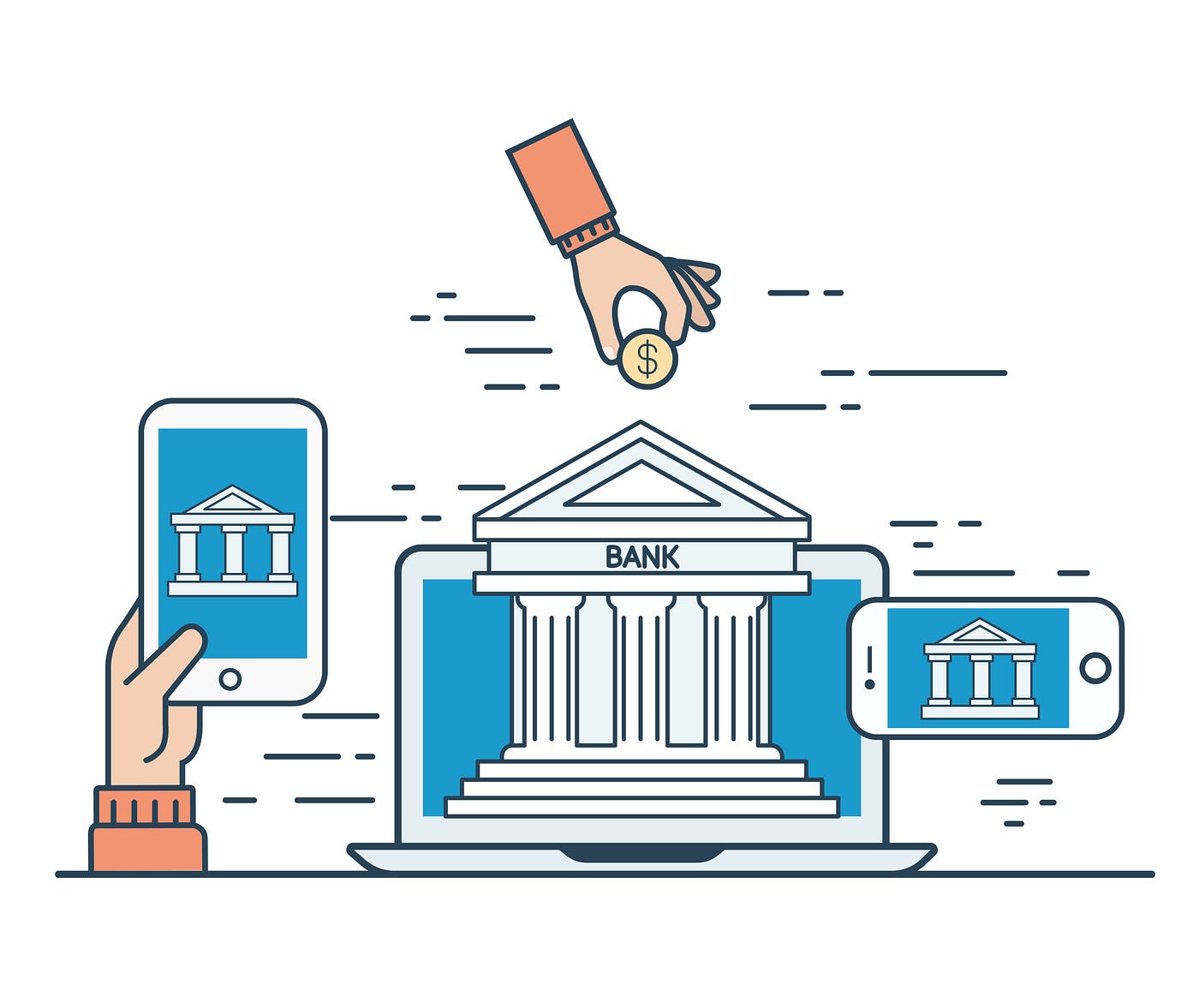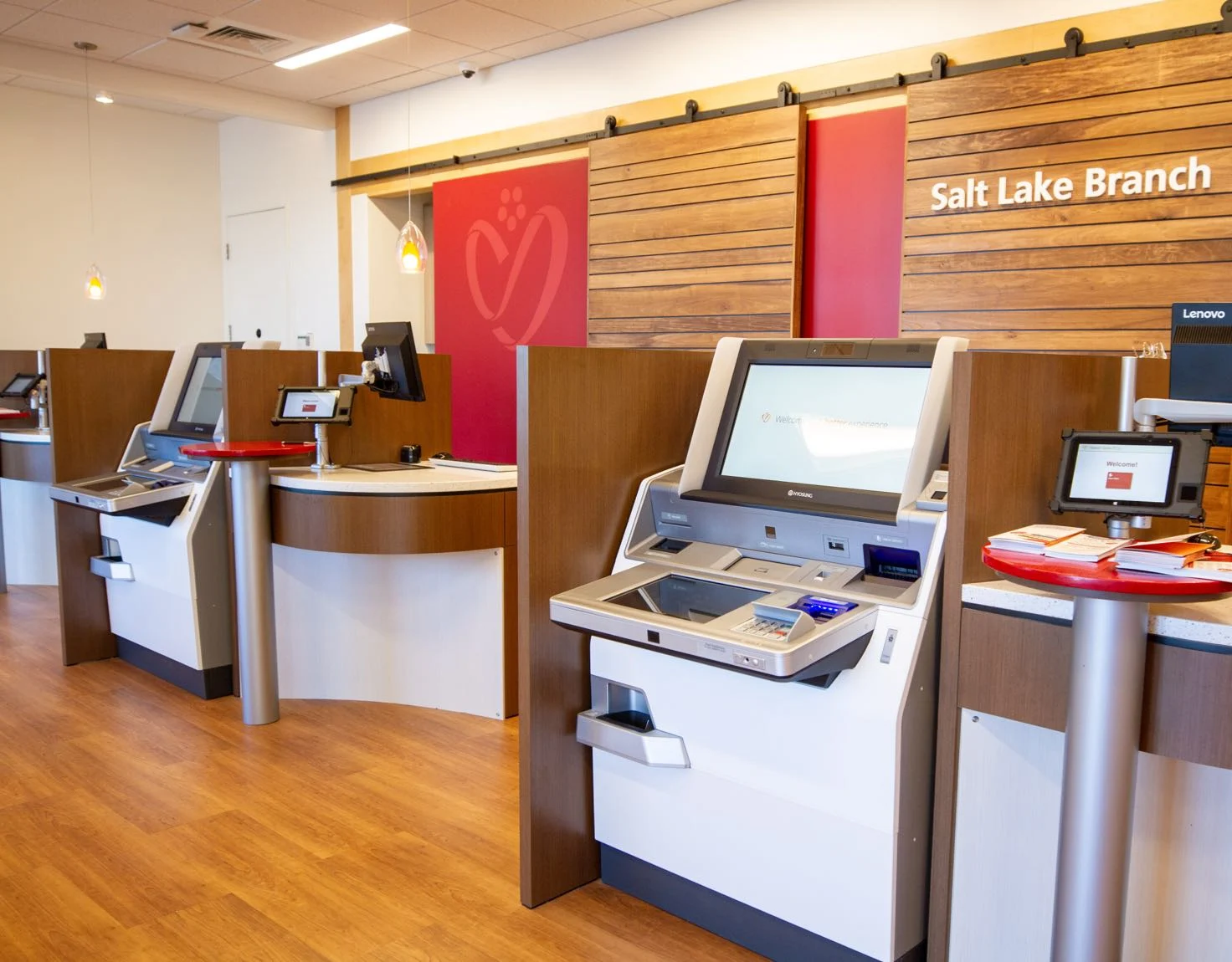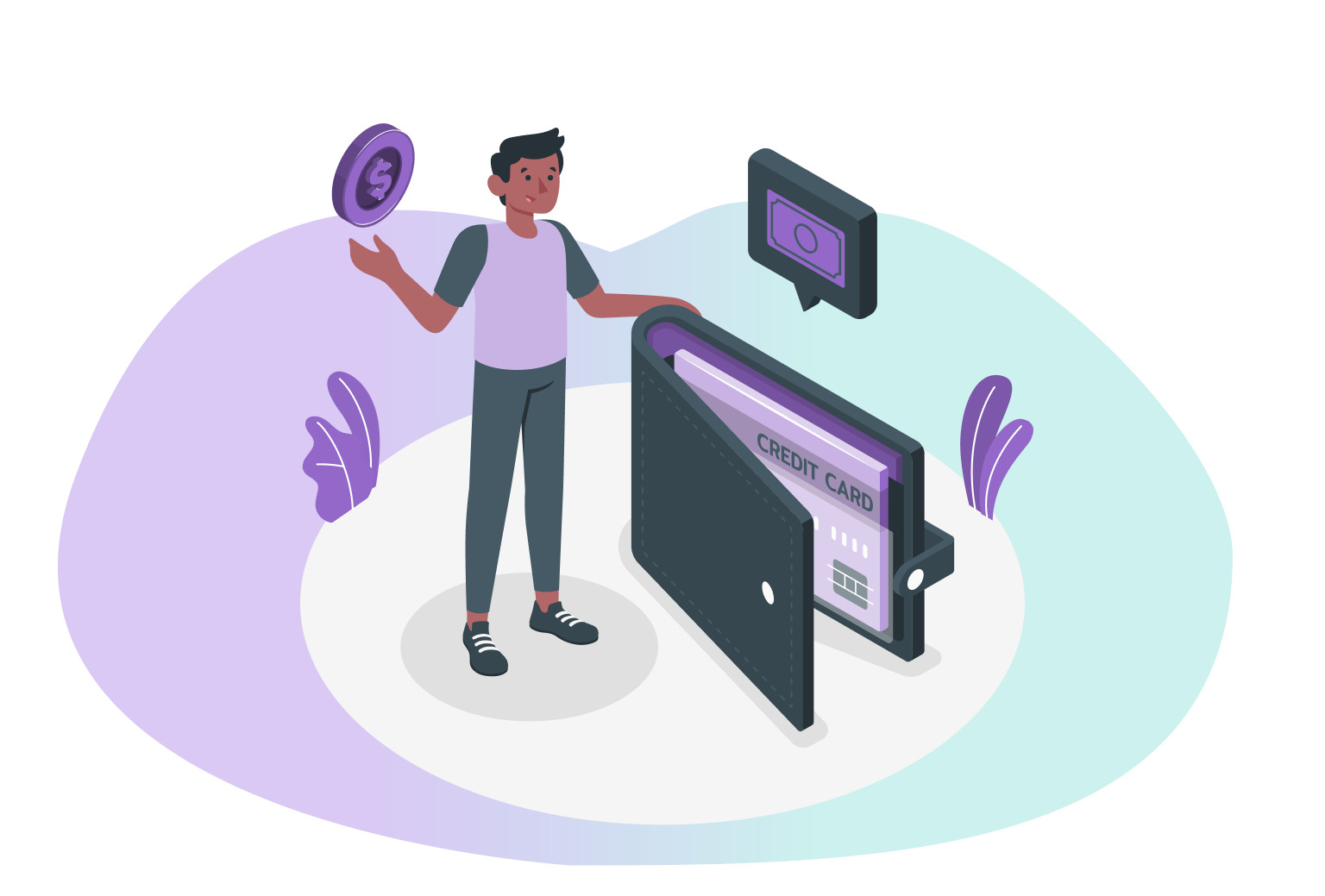Introduction
Welcome to the world of modern banking, where customer service plays a pivotal role in ensuring customer satisfaction and loyalty. In today’s competitive market, banks need to go above and beyond to provide exceptional customer service in order to retain existing customers and attract new ones.
Customer service in banking is not just about resolving issues; it is about building relationships and creating positive experiences for customers at every touchpoint. From personalized assistance to seamless digital platforms, banks have a myriad of opportunities to enhance their customer service offerings.
However, improving customer service in banking goes beyond simply meeting customer expectations. It requires a deep understanding of customer needs, effective communication, streamlined processes, and embracing technology to deliver better service. In this article, we will explore various strategies and best practices that banks can implement to enhance their customer service efforts.
By implementing these strategies, banks can create a customer-centric culture that sets them apart from the competition, and ultimately contributes to the growth and success of the institution.
Understand Customer Needs
One of the key aspects of providing excellent customer service in banking is understanding the unique needs and preferences of your customers. Every customer is different, with varying financial goals, concerns, and expectations. By gaining a deeper understanding of their needs, you can tailor your services and approach to meet their specific requirements.
Start by conducting thorough customer research and segmentation. Analyze customer data, feedback, and transaction history to identify common patterns and preferences. This will allow you to create customer personas and develop targeted strategies to address their needs effectively.
Additionally, invest in regular customer surveys and feedback channels. By directly asking your customers about their experience and their expectations, you can gather valuable insights that can guide your customer service initiatives.
It is also crucial to stay updated on industry trends and changes that may impact your customers. By being proactive and anticipating their needs, you can provide timely and relevant solutions before they even ask for them. For example, if you notice an increase in demand for digital banking services, consider investing in innovative technologies and platforms to cater to this need.
Moreover, fostering a culture of empathy and active listening within your organization is vital. Train your customer service representatives to actively listen and empathize with customers, making them feel heard and understood. This can be achieved through comprehensive training programs that focus on effective communication, problem-solving, and empathy.
Understanding customer needs goes beyond the initial interaction. Continuously monitor and measure customer satisfaction and feedback to identify areas of improvement and implement the necessary changes. Regularly analyze your key performance indicators (KPIs) such as resolution time, first-call resolution rate, and customer churn rate to assess the effectiveness of your customer service efforts.
By truly understanding and addressing your customers’ needs, you can build trust, loyalty, and lasting relationships that will drive the success of your banking institution.
Provide Excellent Communication
Effective communication is the cornerstone of exceptional customer service in the banking industry. Clear and concise communication ensures that customers feel valued, informed, and understood throughout their interactions with your institution.
First and foremost, ensure that your customer service representatives are well-trained in communication skills. They should have the ability to explain complex financial concepts in simple terms, actively listen to customers’ concerns, and provide accurate information in a timely manner. Training programs should also focus on empathy and understanding, enabling representatives to handle difficult or emotional situations with tact and empathy.
It is equally important to offer multiple communication channels to cater to customers’ preferences. Some customers may prefer phone calls, while others may prefer emails or live chat. By providing various contact options, you empower customers to reach out in the way that is most convenient for them.
Response time is crucial in maintaining excellent communication. Ensure that all customer inquiries and concerns are addressed promptly and efficiently. Set clear service level agreements (SLAs) for response times and ensure that your team meets or exceeds these targets consistently.
Additionally, use clear and customer-friendly language in all communications, whether it’s in written materials, website content, or verbal interactions. Avoid using jargon that may confuse or alienate customers. Instead, focus on using plain and simple language that is easy to understand.
Proactive communication is also key. Keep customers informed about important updates or changes that may impact their accounts or services. This can be done through regular newsletters, email notifications, or even personalized messages based on their individual needs and preferences.
Lastly, ensure that all communication channels are easily accessible and user-friendly. Invest in robust customer relationship management (CRM) systems and integrated communication platforms that enable seamless cross-channel communication. This will allow customer service representatives to access customer information quickly and efficiently, providing a personalized and efficient experience.
By prioritizing excellent communication, you can foster trust, transparency, and strong relationships with your customers. This will ultimately result in increased customer satisfaction and loyalty to your banking institution.
Offer Personalized Experiences
In an increasingly competitive banking landscape, offering personalized experiences can set your institution apart from the rest. Customers today expect tailored solutions that address their specific financial needs and goals. By personalizing your services, you can enhance customer satisfaction and build strong, lasting relationships.
Start by leveraging customer data to gain insights into their preferences, behaviors, and financial history. Utilize advanced analytics and customer relationship management (CRM) systems to segment your customer base and identify opportunities for personalization.
Consider offering personalized product recommendations based on customers’ financial goals and spending patterns. By analyzing their transaction history, you can suggest relevant products or services that align with their needs. This can include credit cards with attractive rewards, investment options tailored to their risk appetite, or customized loan offers.
In addition to product recommendations, personalization can extend to customer interactions as well. Train your customer service representatives to greet customers by name and have access to their account information and transaction history. This allows representatives to offer a more personalized and tailored experience, addressing specific concerns or inquiries quickly and efficiently.
Embrace digital technologies, such as artificial intelligence (AI) and machine learning, to further personalize the customer experience. AI-powered chatbots can provide instant assistance, answer frequently asked questions, and guide customers through various banking processes. These chatbots can also learn from customer interactions, continuously improving their responses and recommendations.
Furthermore, consider implementing loyalty programs that reward customers for their banking activities and engagement. Tailor these programs to offer rewards and benefits that align with each customer’s individual preferences and financial behaviors.
Regularly seek feedback from your customers to understand their preferences and gauge the effectiveness of your personalized offerings. Surveys, focus groups, or even social media interactions can provide valuable insights into how well you are meeting their expectations and areas where further personalization can be implemented.
By offering personalized experiences, you demonstrate that you value and understand your customers. This not only enhances customer satisfaction but also increases customer loyalty and advocacy, positioning your banking institution as their preferred choice for all their financial needs.
Enhance Digital Banking Platforms
In today’s digital age, enhancing your digital banking platforms is crucial to providing seamless and convenient customer service. With the increasing popularity of online and mobile banking, customers expect a user-friendly and efficient digital experience. By investing in and continuously improving your digital banking platforms, you can meet these expectations and ensure customer satisfaction.
Start by conducting thorough usability testing to identify any pain points or areas for improvement in your current digital platforms. This can include testing the ease of navigation, speed and responsiveness, and the overall user experience. Use these insights to optimize your platforms and create a seamless and intuitive digital banking journey.
Offer a wide range of digital banking services, such as online account opening, instant fund transfers, bill payment, and financial management tools. Provide customers with easy access to their account information, transaction history, and statements, allowing them to manage their finances anytime, anywhere.
Invest in state-of-the-art security measures to safeguard customer data and protect against fraud and cyber-attacks. Implement robust authentication methods, such as biometrics or two-factor authentication, to provide customers with peace of mind when conducting transactions online.
Integrate digital communication channels within your platforms to enable customers to interact with customer service representatives via live chat, email, or secure messaging. This allows customers to seek assistance or resolve issues without having to visit a physical branch, improving overall convenience.
Regularly update and enhance your digital platforms to incorporate new features and functionalities. Stay informed about the latest technological advancements and industry trends to ensure your platforms remain competitive and provide the best user experience. Continuously monitor customer feedback and conduct regular user testing to identify areas for improvement and make necessary updates.
Additionally, offer personalized digital experiences by leveraging customer data and predictive analytics. Use data to understand customer preferences and behaviors, delivering targeted offers and recommendations that are relevant and meaningful to each customer. This can include personalized product suggestions, tailored financial advice, or customized marketing campaigns.
By enhancing your digital banking platforms, you can provide customers with the convenience and flexibility they desire. This not only improves customer satisfaction but also drives customer loyalty, as customers will choose your institution over others for their banking needs.
Streamline Processes for Faster Service
A key aspect of improving customer service in banking is streamlining internal processes to ensure faster and more efficient service delivery. By optimizing your operational workflows and reducing unnecessary steps, you can provide customers with quick and seamless experiences that enhance their satisfaction.
Start by conducting a thorough analysis of your existing processes to identify bottlenecks and areas for improvement. Map out the end-to-end customer journey and identify any unnecessary steps or redundant processes. Look for opportunities to automate manual tasks and reduce customer wait times.
Invest in technology solutions, such as workflow automation systems and customer relationship management (CRM) platforms, to streamline and digitize your processes. Automating routine tasks, such as account opening, loan processing, or document verification, can significantly reduce turnaround times and improve overall efficiency.
Adopt agile project management methodologies to enhance collaboration and speed up decision-making processes. Break larger projects into smaller, manageable tasks and assign clear responsibilities to team members. Regularly track progress, address any issues promptly, and make necessary adjustments to ensure projects are completed on time.
As part of streamlining processes, ensure effective communication and coordination between different departments and teams. Implement cross-functional training programs to foster a better understanding and collaboration between various areas of the organization. This will enable faster resolution of customer issues and reduce the need for unnecessary transfers or handoffs.
Regularly collect and analyze data on process efficiency and customer feedback. Utilize key performance indicators (KPIs) such as average response time, resolution time, and customer satisfaction scores to measure process effectiveness and identify areas for further improvement.
Embrace a continuous improvement mindset within your organization. Encourage employees to provide feedback and suggestions for process optimization. By empowering them to contribute to process improvement initiatives, you not only tap into their expertise but also foster a culture of continuous learning and innovation.
Furthermore, invest in employee training and development to ensure that your staff are equipped with the necessary skills and knowledge to provide fast and efficient service. Provide ongoing training on process optimization, customer service techniques, and the effective use of technology to streamline workflows.
By streamlining processes, you can minimize customer frustration, reduce wait times, and provide faster service. This, in turn, enhances customer satisfaction and loyalty to your banking institution.
Train and Empower Employees
One of the key drivers of excellent customer service in banking is a highly trained and empowered workforce. Investing in comprehensive training programs and empowering your employees with the necessary knowledge and tools can greatly enhance their ability to provide outstanding service to customers.
Start by developing a robust onboarding program for new employees. Provide them with a thorough orientation that includes an overview of your organization’s values, mission, and customer service expectations. Ensure that they have a solid understanding of your products, services, and internal processes to effectively support customers.
Offer regular and ongoing training sessions to keep your employees updated on industry trends, technical advancements, and best practices in customer service. Focus on enhancing their communication and problem-solving skills, as well as their knowledge of compliance requirements and regulations.
Include role-playing exercises and simulations as part of your training programs to help employees develop their customer service skills in a realistic environment. Provide constructive feedback and support to help them improve and grow in their roles.
Empower your employees with decision-making authority to address customer issues without unnecessary escalation. Give them the freedom to resolve minor complaints and offer appropriate solutions within established guidelines. This autonomy enables employees to provide prompt and satisfactory resolutions, enhancing customer satisfaction.
Encourage a culture of continuous learning and improvement by providing opportunities for professional development. Offer access to online training resources, workshops, seminars, and industry conferences. Support employees in obtaining relevant certifications or licenses to expand their knowledge and expertise.
Recognize and reward outstanding performance and customer service excellence. Establish recognition programs that acknowledge and celebrate employees who consistently go above and beyond to deliver exceptional service. This recognition can be in the form of incentives, bonuses, or public appreciation, reinforcing a customer-centric culture within the organization.
Regularly solicit feedback from employees on their experiences with customers and their suggestions for process improvement. Conduct regular one-on-one meetings and team huddles to address challenges, provide support, and gather insights for enhancing customer service efforts.
Provide employees with the necessary tools, resources, and technology to effectively serve customers. Invest in user-friendly customer relationship management (CRM) systems, knowledge bases, and communication platforms that streamline workflows and enable seamless customer interactions.
By training and empowering your employees, you equip them with the skills, knowledge, and confidence necessary to provide exceptional customer service. This leads to higher customer satisfaction, increased employee morale, and ultimately, the success of your banking institution.
Implement Customer Feedback Systems
Implementing robust customer feedback systems is essential for improving customer service in the banking industry. By actively seeking and listening to customer feedback, you gain valuable insights into their experiences, expectations, and areas for improvement. This allows you to make informed decisions and take necessary actions to enhance your customer service efforts.
Start by offering multiple channels for customers to provide feedback. This can include online surveys, feedback forms on your website or mobile app, and even dedicated helpline numbers or email addresses. Make it easy for customers to share their thoughts and opinions, ensuring that the feedback process is convenient and user-friendly.
Regularly analyze and evaluate the feedback received from customers. Categorize the feedback based on themes, such as customer service, product offerings, or digital platforms. Identify common patterns and trends to understand the areas that require improvement or further investigation.
Consider implementing a Net Promoter Score (NPS) system to gauge customer loyalty and satisfaction. This system provides a metric that measures the likelihood of customers recommending your bank to others. The insights derived from NPS surveys can help you identify opportunities to enhance customer loyalty and address any detractors.
Communicate with customers and acknowledge their feedback promptly. This demonstrates that you value their opinions and are committed to addressing their concerns. Let customers know how their feedback is being used to drive improvement and share updates on any actions taken as a result of their feedback.
Embrace social media as a platform for customer feedback and engagement. Monitor social media channels to promptly respond to customer complaints, queries, or suggestions. Engage in proactive conversations with customers to show that you are committed to resolving issues and providing excellent customer service.
Use customer feedback as a driver for continuous improvement. Collaborate with different teams and departments within your organization to address the issues raised by customers. This may involve making process changes, improving product offerings, or enhancing training programs for employees.
Track and report key metrics related to customer feedback, such as average response time, resolution rate, and overall customer satisfaction. Regularly review these metrics to measure the effectiveness of your customer feedback systems and identify areas for further improvement.
Consider incentivizing customers to provide feedback by offering rewards or entering them into sweepstakes. This can encourage greater participation and provide an added incentive for customers to share their opinions and experiences.
By implementing robust customer feedback systems, you demonstrate a commitment to listening and understanding your customers. This enhances customer satisfaction, builds trust, and enables you to continuously improve your customer service efforts in the banking industry.
Embrace Technology for Better Service
In the ever-evolving landscape of customer service, embracing technology is instrumental in providing better service in the banking industry. Technology offers a wealth of opportunities to enhance efficiency, convenience, and personalization, ultimately leading to improved customer experiences.
One area where technology can greatly benefit customer service is through the implementation of chatbots and virtual assistants. These AI-powered tools can provide instant assistance, answer frequently asked questions, and guide customers through various banking processes. This availability of round-the-clock support enhances convenience and reduces customer wait times.
Another technology-driven initiative is the adoption of personalized digital experiences through advanced analytics and data-driven insights. By leveraging customer data, banks can offer personalized recommendations, customized offers, and tailored financial advice that align with each customer’s unique needs and preferences.
Mobile banking applications have become an essential tool for customers, allowing them to manage their accounts, make transactions, and access financial information on the go. Investing in intuitive and user-friendly mobile apps ensures that customers have easy and convenient access to their banking services, enhancing their overall experience.
Enhanced security measures are also crucial in today’s digital landscape. The implementation of biometric authentication methods, such as fingerprint or facial recognition, adds an extra layer of security and convenience for customers when accessing their accounts or conducting financial transactions.
Blockchain technology has the potential to revolutionize the banking industry, especially in terms of security and transparency. By leveraging blockchain, banks can ensure secure and tamper-proof transactions, streamline processes such as remittances and settlements, and reduce the risk of fraud.
Data analytics and automation can also significantly improve the efficiency and accuracy of banking processes. By analyzing large volumes of data, banks can gain insights into customer behavior, identify patterns, and anticipate customer needs. Automation can streamline routine tasks, reducing human error and allowing employees to focus on more complex and value-added activities.
It is essential to continuously stay informed about the latest technological advancements and industry trends. Regularly assess your technology infrastructure and make necessary upgrades to ensure that you are leveraging the most innovative solutions to deliver better customer service.
However, it’s important to strike a balance between technology and human interaction. While technology can streamline processes and enhance convenience, the human touch is still crucial for building trust and providing personalized service. Find the right mix of innovative technology and human expertise to create a seamless and customer-centric experience.
By embracing technology, banks can unlock new possibilities for delivering better service to their customers. By leveraging advanced analytics, automation, mobile apps, and other technological solutions, banks can improve efficiency, personalization, and convenience, ultimately enhancing customer satisfaction and loyalty.
Conclusion
Providing excellent customer service is crucial in the banking industry to ensure customer satisfaction, loyalty, and a competitive edge. By implementing various strategies and best practices, banks can enhance their customer service efforts and deliver exceptional experiences to their customers.
Understanding customer needs through thorough research and segmentation allows banks to tailor their services and offerings to meet specific customer requirements. By listening to customer feedback, analyzing data, and staying updated on industry trends, banks can continuously improve their customer service approach.
Clear and effective communication is essential for building strong relationships with customers. By training employees in communication skills, offering multiple communication channels, and ensuring prompt responses, banks can create positive and meaningful interactions.
Offering personalized experiences based on customer data and preferences shows customers that they are valued and understood. By leveraging technology and data analytics, banks can deliver targeted recommendations, customized solutions, and personalized communication that meet individual customer needs.
Enhancing digital banking platforms enables customers to access services conveniently and efficiently. By investing in user-friendly interfaces, robust security measures, and seamless integrations, banks can provide a superior digital experience for customers.
Streamlining internal processes improves efficiency and reduces wait times for customers. By eliminating bottlenecks, embracing agility, and empowering employees, banks can provide faster and more efficient service delivery.
Training and empowering employees with the necessary skills and knowledge fosters a customer-centric culture. By recognizing and rewarding outstanding performance, encouraging continuous learning, and providing access to technology and resources, banks can build a highly skilled and motivated workforce.
Implementing customer feedback systems allows banks to gather valuable insights, make informed decisions, and drive continuous improvement. By actively seeking and listening to customer feedback, banks can address concerns, enhance customer satisfaction, and strengthen relationships.
Lastly, embracing technology plays a vital role in enhancing customer service in banking. By leveraging AI-powered tools, adopting personalized digital experiences, implementing advanced security measures, and utilizing data analytics and automation, banks can optimize their operations and deliver better service.
In conclusion, by implementing these strategies and practices, banks can elevate their customer service efforts, exceed customer expectations, and differentiate themselves in a highly competitive market. Prioritizing customer satisfaction and building strong, long-lasting relationships will ultimately drive the success of any banking institution.

























